Disclosure: This article contains affiliate links. We may earn a commission from purchases at no extra cost to you, which helps our travel content.
When most travelers think of Negril, Jamaica, images of pristine Seven Mile Beach and all-inclusive resort buffets likely come to mind. But as someone who believes travel should be as educational as it is enjoyable, I've discovered that the real heart of Jamaican culture beats strongest in its local kitchens, roadside stands, and family-run eateries. On a recent winter escape from Philadelphia's bone-chilling temperatures, my close friend Elena and I traded our legal briefs for beach wraps and embarked on a week-long culinary adventure in Negril. What we discovered was a vibrant tapestry of flavors that tells the story of Jamaica's complex history—from indigenous Taíno traditions to African, Spanish, Indian, and British influences that have melded over centuries into something uniquely and deliciously Jamaican. This guide is for couples looking to experience authentic Jamaican cuisine beyond resort walls, with practical tips to navigate Negril's food scene respectfully and adventurously.
Finding Your Way to Authentic Jamaican Flavors
My approach to food exploration in Negril was shaped by years of learning to connect with diverse communities as a public defender. I've found that food often serves as the most accessible entry point to understanding a culture, especially when approached with genuine curiosity and respect.
Elena and I chose to stay at a mid-range hotel near Norman Manley Boulevard, positioning ourselves between the famous Seven Mile Beach and the West End cliffs. This strategic location allowed us to easily venture out for culinary explorations while maintaining a comfortable home base.
Before arriving, I invested in a comprehensive Jamaica travel guide that provided historical context for many dishes we'd encounter. Understanding that jerk seasoning originated with the Maroons (escaped slaves who formed independent communities) or that ackee (Jamaica's national fruit) arrived from West Africa on slave ships added meaningful layers to our dining experiences.
On our first morning, we connected with a local guide named Marcus through our hotel's concierge. Unlike the large tour operators pushing standard excursions, Marcus specialized in small-group food tours, taking travelers to spots where Jamaicans actually eat. This initial four-hour tour became our culinary orientation, helping us identify which roadside stands were reputable and teaching us basic Patois phrases to use when ordering.
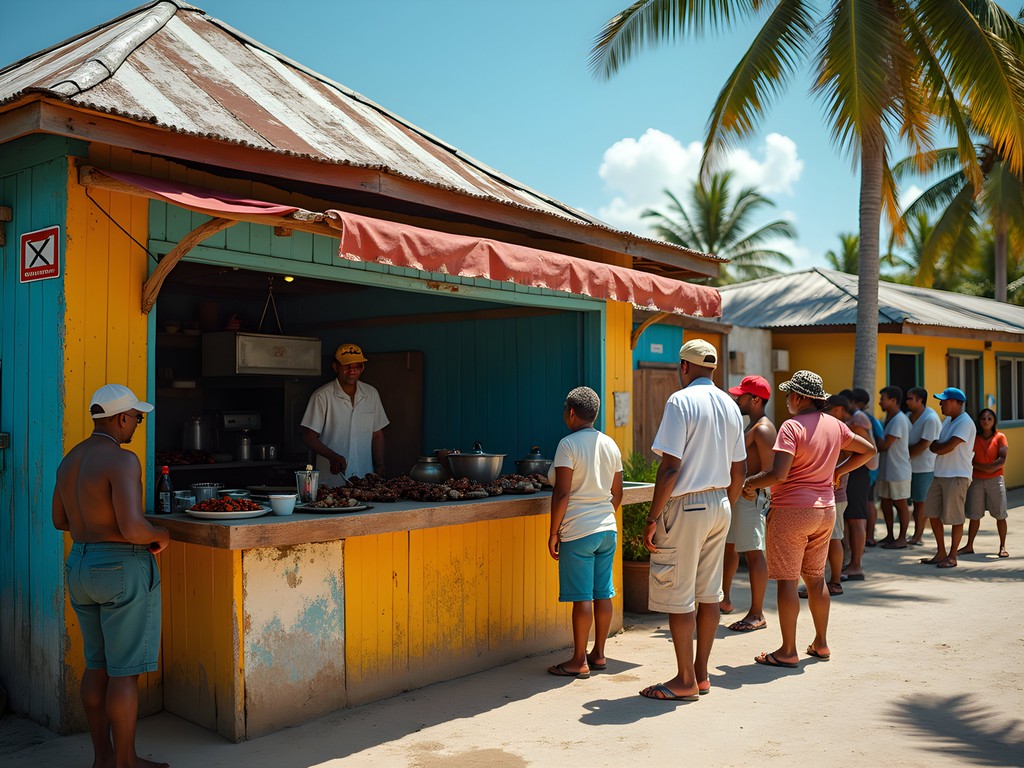
💡 Pro Tips
- Research Jamaican food history before your trip to appreciate the cultural significance of what you're eating
- Stay in accommodations that allow easy access to local areas, not isolated resorts
- Begin with a small-group food tour led by a local to orient yourself to the authentic food scene
Jerk: More Than Just a Seasoning
No culinary journey through Jamaica would be complete without exploring the island's most famous cooking style: jerk. While resort versions offer a sanitized introduction, the roadside jerk centers scattered throughout Negril deliver an entirely different sensory experience.
My legal training has taught me to look beyond surfaces, and jerk cooking is a perfect example of food as historical document. This cooking method developed as a preservation technique among Jamaica's Maroon communities—escaped slaves who needed to cook without creating visible smoke that would reveal their locations to British forces. The complex spice mixture and smoking technique they developed has evolved into today's jerk tradition.
Three Mile Road, just east of Negril's center, hosts several outstanding jerk centers where the real magic happens. We became regulars at Bourbon Beach Jerk Centre, where Chef Roy has been smoking meat over pimento wood for over two decades. Unlike the uniform pieces served at resorts, Roy's jerk chicken arrives hacked into irregular chunks, deeply penetrated by smoke and spice, with a complexity that reveals layers of flavor with each bite.
For those concerned about street food safety, I recommend bringing a portable water bottle with filter to ensure you always have clean water on hand. The intense heat of proper jerk cooking (and the scotch bonnet peppers' natural antimicrobial properties) generally makes this one of the safer street food options, but staying hydrated is essential when consuming spicy foods in tropical heat.
Most jerk centers operate similarly: you order by weight, wait while your selection is chopped, then receive your bounty wrapped in foil with festival (slightly sweet fried dough) or hard dough bread on the side. A cold Red Stripe beer is the traditional accompaniment, though fresh soursop juice provides a refreshing non-alcoholic alternative.
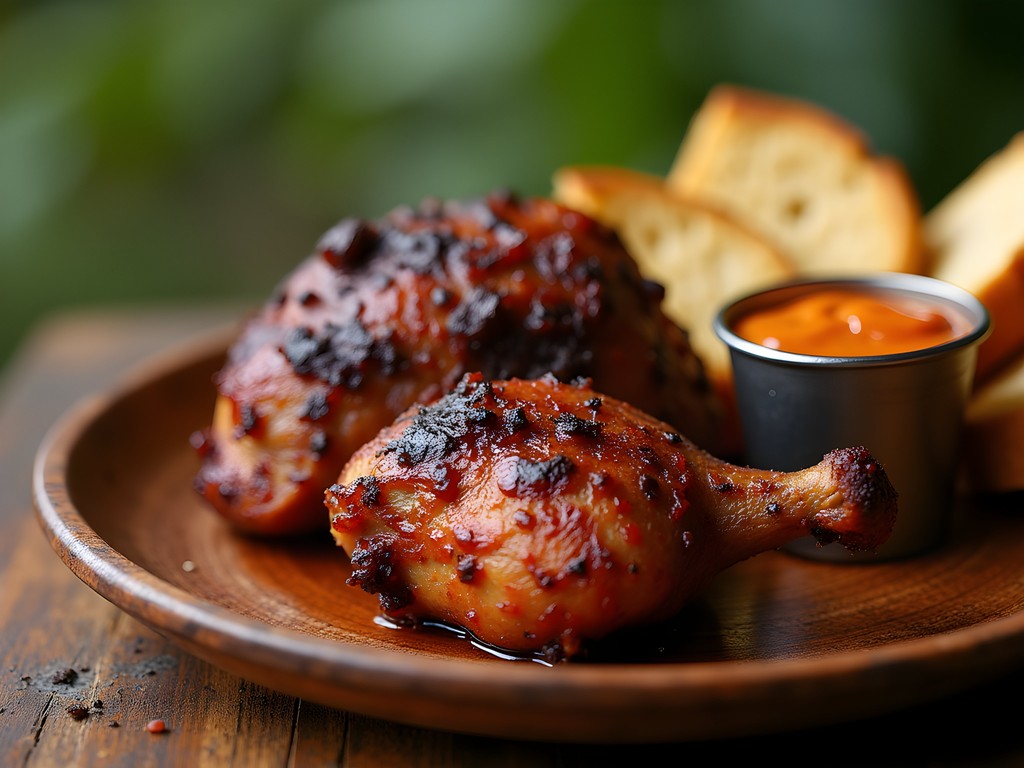
💡 Pro Tips
- Look for jerk centers using pimento wood (not charcoal) for authentic flavor
- Order quarter or half portions your first time to test your spice tolerance
- Ask for the sauce on the side if you're sensitive to heat—authentic jerk can be significantly spicier than resort versions
From Sea to Table: Negril's Seafood Scene
Jamaica's relationship with the sea extends beyond picturesque beaches—it's a vital source of sustenance and cultural identity. In Negril, this connection manifests in numerous seafood establishments ranging from upscale restaurants to humble fish shacks where the catch arrives directly from colorful wooden fishing boats.
The West End cliffs area hosts several outstanding seafood spots where the dining experience is as much about the breathtaking setting as the food itself. Push-Cart Restaurant at Rockhouse Hotel offers a refined take on traditional Jamaican seafood dishes, but for a more authentic experience, we preferred the family-run operations along the cliffs.
3 Dives quickly became our favorite spot—a modest open-air restaurant where Chef Lydie prepares the day's catch with generations-old recipes. Her brown stew fish, made with red snapper caught that morning, exemplifies how Jamaicans transform simple ingredients into complex flavors through patience and technique. The fish simmers in a sauce featuring local ingredients like Scotch bonnet peppers, thyme, and pimento (allspice), creating a dish that's simultaneously sweet, savory, and spicy.
For those seeking the freshest possible seafood experience, Little Bay Fish Market operates directly on the beach where fishermen sell their catch. With a small fee, the adjacent cooking shacks will prepare your purchase to your specifications. I recommend bringing a insulated water bottle filled with ice water for these excursions, as the combination of sun exposure and spicy seafood can quickly lead to dehydration.
Perhaps the most memorable seafood experience came from an impromptu invitation. While photographing fishing boats at Bloody Bay, we struck up a conversation with a fisherman named Devon who invited us to his family's Sunday fish fry. What followed was an afternoon of freshly caught parrot fish prepared three ways—steamed with okra, fried with bammy (cassava flatbread), and roasted over open flame—while three generations shared stories of how Negril has changed over decades.
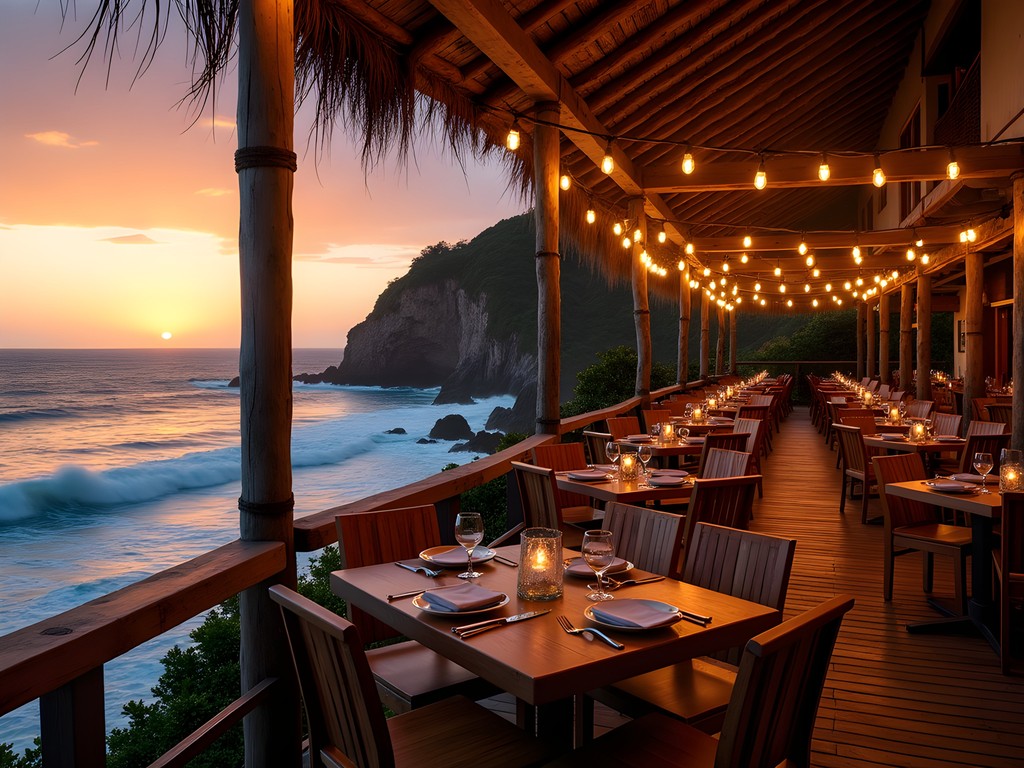
💡 Pro Tips
- Ask about the day's catch rather than ordering from a menu for the freshest seafood
- Be flexible with timing at local seafood spots—the pace is dictated by the day's fishing, not by rigid schedules
- Learn the local names for fish varieties, as they often differ from what you might be familiar with
Market Day: The Heart of Jamaican Home Cooking
To truly understand Jamaican cuisine, one must visit a local market where the building blocks of the island's food culture are on vibrant display. Negril's Thursday Market transformed my understanding of Jamaican food by showcasing ingredients rarely featured on tourist menus.
Armed with a compact travel camera to document the experience without being intrusive, Elena and I arrived early to observe vendors arranging pyramids of callaloo (similar to spinach), stacks of yellow yams, and piles of breadfruit. The market functions as both shopping venue and social hub, where vendors call out to regular customers and negotiate prices with good-natured banter.
What struck me most was the diversity of produce unfamiliar to North American eyes—Scotch bonnet peppers in various colors and heat levels, star apples with their purple flesh, gnarly chocho (chayote), and dozens of yam varieties that form the backbone of traditional Jamaican starchy sides.
Our market visit became interactive when Miss Elaine, a vendor who noticed our curious examination of her produce, offered to teach us about Jamaican food. After purchasing ingredients from her stall, we followed her invitation to her nearby home where she demonstrated how to prepare run down (mackerel cooked in coconut milk) and turn cornmeal into perfect festival dough. This impromptu cooking lesson provided insights no restaurant experience could match.
The market also offers prepared foods, with several stalls serving breakfast staples like ackee and saltfish (Jamaica's national dish), mackerel rundown, and steamed callaloo. These modest operations often serve the most authentic versions of dishes that resorts adapt for foreign palates.
As a lawyer who works with diverse communities, I've learned that approaching unfamiliar situations with respectful curiosity opens doors. At the market, this meant asking permission before photographing vendors, learning basic Patois greetings, and showing genuine interest in the stories behind the foods. These small gestures led to meaningful exchanges that enriched our understanding of Jamaican culinary traditions.
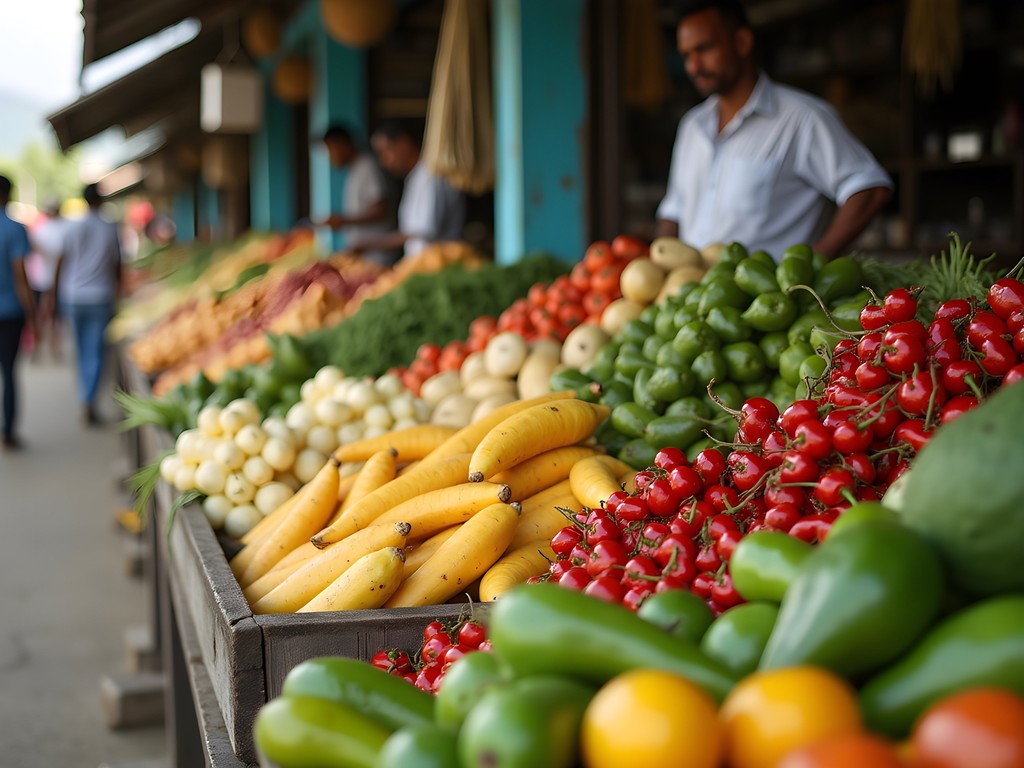
💡 Pro Tips
- Visit markets early (before 9am) when produce is freshest and temperatures are cooler
- Bring small bills and coins for easier transactions, as vendors rarely have change for large notes
- Ask vendors about unfamiliar ingredients and how they're traditionally prepared—most are happy to share knowledge with interested visitors
Sweet Endings: Jamaican Desserts and Coffee Culture
Jamaica's sweet traditions reflect the island's agricultural abundance and multicultural history. While resort dessert buffets might feature international options, local sweet spots offer authentic treats that tell stories of Jamaica's past and present.
Our dessert exploration began with Negril's roadside sweet stands, where women sell treats prepared in home kitchens. Grater cake (coconut colored with bright food coloring and sweetened), gizzada (coconut tarts with crisp pastry shells), and sticky sweet potato pudding became our regular afternoon indulgences. These treats connect directly to Jamaica's history—many recipes evolved from plantation-era necessity, when enslaved Africans created confections using available ingredients like coconut, sweet potato, and sugarcane.
For a more substantial dessert experience, Miss Sonia's Sweet Shop near the roundabout serves remarkable Jamaican black cake. Unlike the fruit cakes familiar to Americans, this dense, rum-soaked confection gets its distinctive dark color from caramelized sugar and features fruits that have been soaked in rum for months. Miss Sonia explained that her recipe has been passed down through five generations of her family, with each generation making subtle adjustments.
No discussion of Jamaican sweets would be complete without mentioning Blue Mountain coffee, one of the world's most celebrated coffee varieties. While Negril is far from the Blue Mountain growing region, several cafés serve authentic beans. Time Travellers Café quickly became our morning ritual, where barista Devon prepares pour-overs that showcase the coffee's distinctive smooth flavor and lack of bitterness.
For coffee enthusiasts looking to bring home a taste of Jamaica, I recommend purchasing beans directly from certified sellers rather than tourist shops, where counterfeits are unfortunately common. The vacuum-sealed travel containers proved perfect for transporting freshly roasted beans home without losing flavor.
Perhaps the most unexpected sweet experience came from Devon (the same fisherman who invited us to his family's fish fry), who introduced us to duckunoo (also called blue drawers or tie-a-leaf)—a sweet dumpling of cornmeal, coconut, and spices wrapped in banana leaves and boiled. His grandmother prepared these labor-intensive treats, explaining they originated with the Maroons and represent one of Jamaica's most direct culinary links to West African heritage.

💡 Pro Tips
- Look for desserts made with local ingredients like coconut, ginger, and rum for the most authentic experience
- Ask about the history behind traditional sweets—many have fascinating origins that connect to Jamaica's complex past
- Purchase Blue Mountain coffee from reputable sources that can verify authenticity, as counterfeits are common in tourist areas
Respectful Culinary Tourism: Connecting Through Food
As a public defender who works with diverse communities, I approach travel with an awareness of power dynamics and a commitment to respectful engagement. In Negril, this meant being conscious of how tourism impacts local food systems and communities.
One afternoon, we joined a cooking workshop at Zimbali Retreat, an eco-conscious farm-to-table operation in Negril's rural outskirts. Unlike performative tourist experiences, this workshop connected us with actual farmers and cooks who shared traditional techniques while explaining how climate change is affecting Jamaica's growing seasons and food security.
Chef Eli demonstrated how to prepare ital food—the plant-based cuisine associated with Rastafarian culture that emphasizes natural, unprocessed ingredients. Beyond learning recipes, we gained insight into how food choices reflect philosophical and spiritual values in Jamaican culture. The retreat's approach to sustainable farming offered a counterpoint to the resource-intensive all-inclusive resorts that dominate much of Negril's coastline.
Throughout our culinary explorations, we prioritized establishments owned by Jamaicans rather than international chains. This often meant venturing beyond tourist zones and communicating across language differences (while English is Jamaica's official language, many locals speak Patois among themselves). These efforts were invariably rewarded with more authentic experiences and the satisfaction of knowing our tourism dollars supported local families.
One evening at 3 Dives restaurant, we witnessed a perfect example of how food creates connection. A thunderstorm trapped diners under the restaurant's zinc roof, transforming strangers—Jamaican families, European backpackers, and American couples—into a temporary community sharing plates of grilled lobster and stories while waiting out the rain. These unplanned moments of cross-cultural connection are the souvenirs I value most from travel.
For couples looking to engage respectfully with Jamaican food culture, I recommend approaching unfamiliar dishes and dining customs with genuine curiosity rather than judgment. Ask questions, express appreciation, and recognize that what might seem unusual to you represents generations of cultural wisdom and adaptation. Bring a travel journal to record recipes, recommendations, and the stories behind special meals—these notes will become treasured memories of your Jamaican experience.
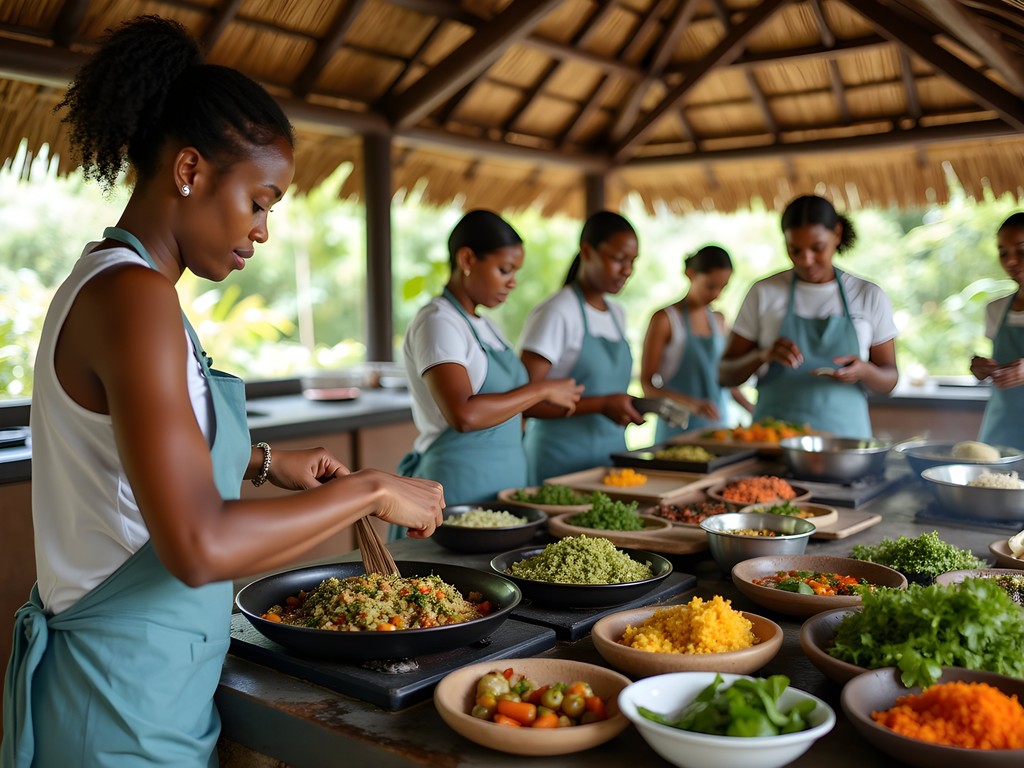
💡 Pro Tips
- Support locally-owned establishments rather than international chains to ensure your tourism dollars benefit the community
- Learn basic Patois phrases to show respect and facilitate deeper connections with local food vendors
- Ask permission before photographing people or their food preparation—what seems picturesque to you is someone's livelihood
Final Thoughts
Our week in Negril revealed that authentic Jamaican cuisine is both a window into history and a living, evolving tradition shaped by the island's complex cultural heritage. By venturing beyond resort walls and approaching local food with curiosity and respect, we discovered flavors that no buffet could capture and formed connections that enriched our understanding of Jamaica far beyond tourist stereotypes. From roadside jerk centers to family fish fries, each meal became a lesson in how food reflects identity, history, and community. For couples seeking a deeper connection to Jamaica, I encourage you to approach the island's cuisine as both adventure and education. Ask questions, learn the stories behind dishes, and recognize that each bite connects you to generations of cultural wisdom. The memories of smoke-infused jerk chicken, fresh-caught fish prepared cliffside, and the warmth of Jamaican hospitality will remain with you long after your suntan fades. As we say in Jamaica: 'Wi likkle but wi tallawah'—we may be small, but we are strong, resilient, and profoundly flavorful.
✨ Key Takeaways
- Authentic Jamaican cuisine exists primarily outside resort walls in family-run establishments and roadside stands
- Each Jamaican dish tells a story of cultural resilience, historical influence, and agricultural adaptation
- Approaching unfamiliar foods with respect and curiosity leads to deeper cultural connections and more meaningful travel experiences
📋 Practical Information
Best Time to Visit
December through April (dry season)
Budget Estimate
$100-150 per day per couple (excluding accommodations)
Recommended Duration
5-7 days
Difficulty Level
Beginner
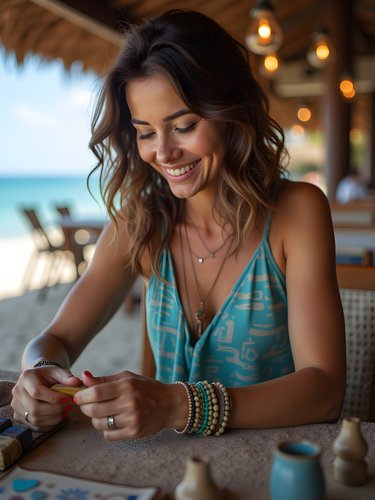














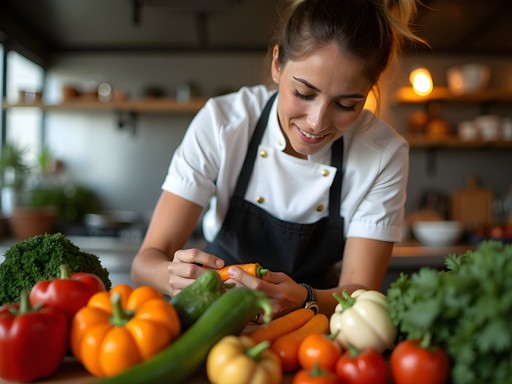

Comments
SunSeeker99
I really like your photos of the fish fry! So colorful!
IslandHopper23
Just got back from Negril last week and totally agree about getting out of the resorts! We stayed at an all-inclusive but made a point to eat lunch in town most days. The patties at Juici Patties were so good and cheap! We also did a cooking class with a local family where we learned to make authentic ackee and saltfish. Such a better experience than just sitting at the resort pool all day. The market day section of your post is spot on - we went on Wednesday morning and the produce was incredible. Bought some spices to bring home too!
CaribTraveler
Where did you do the cooking class? Would love to try that!
IslandHopper23
@CaribTraveler It was with Zimbali Retreats - about 30 min drive from Negril but totally worth it! They pick you up from your hotel.
freestar
we did the public transportation too and it was great! way cheaper than taxis
TravelingMom45
Going to Negril with kids next month. Any family-friendly local food spots you'd recommend?
JamaicaLover
Not the author but we took our kids to Sweet Spice and they loved the festival bread and milder jerk chicken. The staff was super accommodating!
TravelingMom45
Thank you! Adding it to our list!
BeachDreamer92
Those seafood pics are making me hungry! 🦞🔥
JamaicanJourneysHayden
Savannah, your post took me right back to my trip last year! The jerk chicken at Bourbon Beach was life-changing - that perfect balance of smoke, spice and sweetness that you just can't replicate back home. Did you make it to Pushcart Restaurant? Their curried goat had me dreaming about it for weeks. I always tell my readers that the resort food in Jamaica is just the appetizer - the real meal begins when you step outside those gates. I actually hired a local guide through local experiences who took me to some incredible food spots that weren't even on Google Maps. The roadside fish fry near Little Bay was probably the freshest seafood I've had anywhere in the Caribbean!
freestar
How spicy was the jerk chicken? I'm heading there next month but can't handle super hot food!
JamaicanJourneysHayden
@freestar Most places will ask how spicy you want it! Just tell them 'mild' and you'll be fine. The flavor is still amazing even without the heat.
freestar
Thanks! That's good to know!
vacationadventurer
I really love how you explored beyond the resort! That's real travel.
bluewalker
Totally agree! Resort food is fine but you miss so much of the culture if you don't venture out.
beachking
Those seafood photos are making me hungry! Can't wait to go back to Jamaica!
bluewalker
This post brings back so many memories! We visited Negril last summer and made it a point to eat where the locals eat. Best decision ever! The roadside jerk stands were incredible - 3 Dives was our favorite. We also took a Jamaican cooking class where we learned to make authentic ackee and saltfish. The instructor took us to the market first to pick ingredients, and taught us about all the exotic fruits and spices. Totally worth it if you want to bring some Jamaican cooking skills home with you!
tripfan
Going to Negril next month! Any recommendations for the best jerk chicken spot that won't break the bank?
beachking
Bourbon Beach has amazing jerk and it's right on the sand! Super casual and affordable.
tripfan
Thanks! Adding it to my list!
Venture X
Premium card with 2X miles, $300 travel credit, Priority Pass